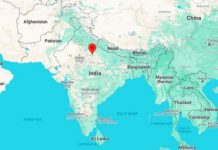
May 8 (UPI) — Where did the earliest Indians come from?
The origins of the peoples of the Indian Subcontinent remains a much debated topic among scientists. But new research has offered some clarity on the matter.
The latest analysis suggests India was populated by a succession of migrations from Africa, the Middle East and Central Asia.
Previously, a lack of ancient DNA samples has hampered the search for India’s genetic origins. The subcontinent has yielded few well-preserved skeletal remains.
Marine Silva, an archaeogeneticist and doctoral student at the University of Huddersfield, was able to skirt this impediment by using modern DNA sourced from people living in India today.
Their analysis, detailed in the journal BMC Evolutionary Biology, showed India hosts some very ancient lineages and was populated by several waves of migration.
The earliest Indians were hunter-gatherers from Africa. They arrived on the subcontinent 50,000 years ago. More settlers arrived from what is now Iran between 10,000 and 20,000 years ago, shortly after the end of the last ice age. The migrants brought early farming techniques with them.
African and Middle Eastern origins are most apparent among the male genetic lineage, the mitochondrial DNA. The female lineage, the Y-chromosome, suggests a large influx of people from Central Asia migrated to India 5,000 years ago.
Researchers believe these Bronze Age migrants were Indo-European speakers who populated the grasslands between the Black and Caspian seas. These male-dominated, roaming pastoralists domesticated the horse and spoke an early iteration of Sanskrit.
Some 200 years ago, linguists showed Sanskrit is related to Greek and Latin. Previous studies have suggested the same population of horse-riders settled Europe. The latest findings suggest Europeans and Indians share a common ancestor.





